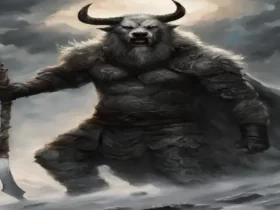Mythology is filled with stories of mythical creatures and one of the most popular is the water dragon also called sea dragons, sea serpents or sea monsters. Much like its mythical counterparts, the water dragon features many unusual features that have made it a popular topic for pop culture too.
From stories of Heracles slaying this ferocious beast Hydra to the biblical water beast Leviathan, there are simply few famous legendary water dragons to list. But whether you’re a believer or not, these 10 famous mythical sear dragons (or sometimes referred as water dragon or sea monsters or sea serpents) are definitely worth checking out from different mythology.
1 Jormungandr
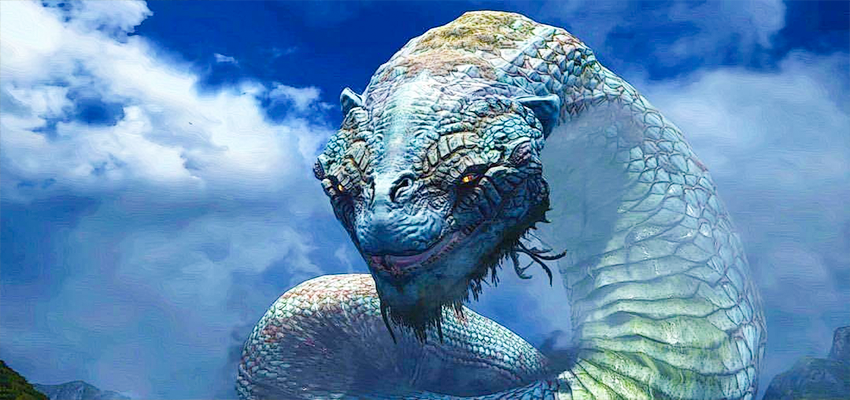
In Norse mythology, Jǫrmungandr (Midgard) is a snake or water monster with scales that grow constantly. In the Norse myth, Jǫrmungandr is one of three children (the wolf Fenrir, Hel, and Jǫrmungandr) conceived by Loki’s wife Angrboðad.
Jörmungandr and his siblings lived with their mother in the realm of giants until God had a prophecy about them. Odin ordered them to be removed as young children, but soon had Fenrir hurled into an island and bound with a rock where Jörmungandr was sent under the dark world or deep levels of sea, and eventually hurled his youngest son to a icy Niflheim for everyone to see.
The Midgard Serpent or World Serpent grew large enough to flip around the Earth and grab its own tail. Ragnarok starts when his tail is released. His enemy will be the thunder god, Thor.
Fenrir is destined to break free and wage war against the gods at the end of days known as Ragnarok. Hel will provide a force of dead warriors for Fenrir, and Jörmungandr will merge with them and release his great serpentine tail to join the forces of chaos. This creature is a depiction of ouroboros.
2 Chinese Sea Serpent
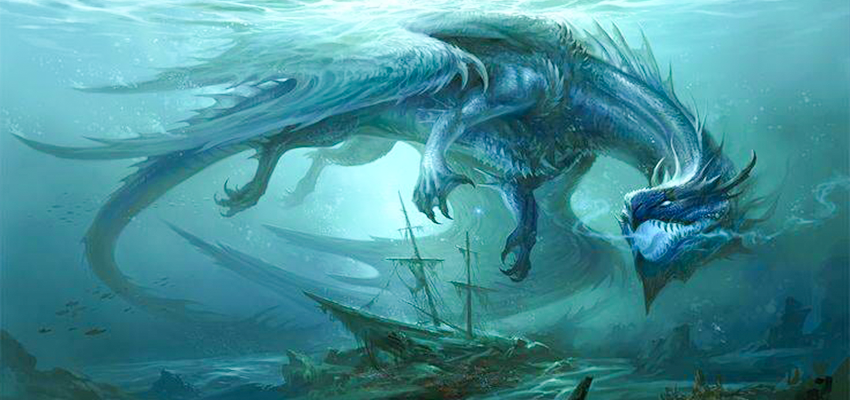
In mythological Chinese history, they believed dragons live in rivers, lakes, and oceans, but might also fly around in the sky. They are not considered malevolent like the European counterpart of Dragons.
Long was given the title of king of dragons with a water monster snakelike body and large demonic eyes. Long’s image was depicted as a sacred symbol for Chinese emperors.
Also, by the Chinese cosmologists, the four dragons – Celestial (Tianlong), Hidden Treasure (Fuzanglong), Earth (Dilong), and Spiritual dragons (Dilong) make up the varying aspects of a traditional Chinese belief in which the latter two are the most essential and are transformed into the Dragon Kings.
Related Reads: 11 Most Famous 3-Headed Dragons & Monsters From Myths & Movies
3 Leviathan
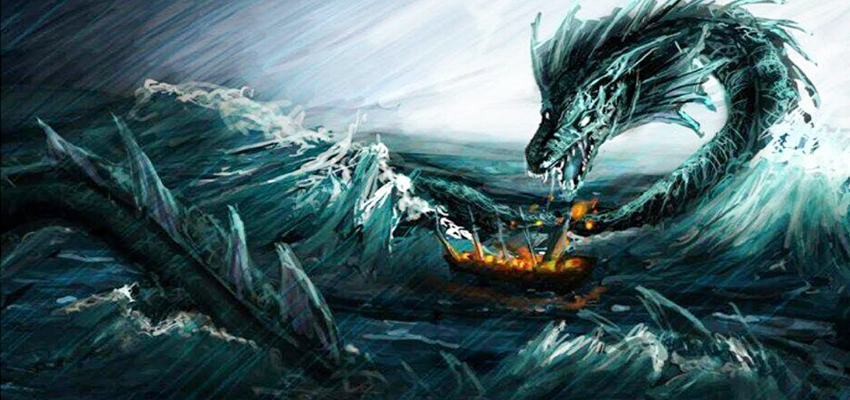
The biblical sea monster known as the Leviathan can be viewed as either a unique metaphor for the sheer size and power of God, or it can be seen as a demonic beast. In religious context, the Leviathan is regarded as a monster of waters
The Leviathan, with its red skin and fish-like maw has become a figure of religious significance with believers that the Leviathan is one of the few large water creatures and is closely in touch with god.
While the Leviathan is described in different terms by various sources, it is generally said to be an aquatic sea creature of immense size. Some have reported that the body resembles a whale and has a thick, cylindrical shape along with fins. Some have said that the Leviathan breathes fire and has the ability to create energy balls out of its mouth. The beast’s body on average is thinner, more like that of a snake.
4 Bakunawa
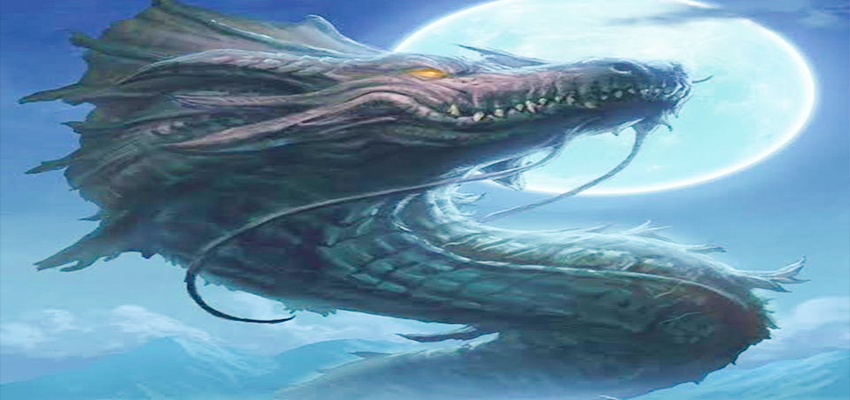
A large serpent-looking animal with side wings is a creature of Philippine mythology. It causes storms, eclipses, and has a mouth as large as a lake. It has whiskers, gills, two sets of wings and a red tongue. The Bakunawa is said to have caused eclipses by taking the seven moons that Bathala had created. Ancient Filipino’s believe that the Bakunawa ate the Moons.
In order to keep the Bakunawa from eating up the moon, ancient Filipinos would clean pots and pans and make noise in an attempt to scare the Bakunawa back into spitting out their meal in the sky back.
Some of the villages trying to stop a dragon that was terrorizing the land would play sleep inducing sounds while they meticulously prepared weapons. They knew they had to take advantage of the moment, however, as well as prepare themselves for what awaited them in this battle. The dragon was known as a “moon eater” because it would devour any light sources and thus hide in shadow during daylight hours. It was also known as a “man eater” because it was often known to kill and eat men who ventured too close.
5 Tiamat

Tiamat is often considered a sea serpent and goddess of chaos in many Mesopotamian myths, as represented by forces of natural and primordial order. She gives life to the first generation of gods, combining with Apsu (the personification of fresh water) and their union. As she was at one point outraged by the behavior of her offspring, she brought a horde of demons into existence, who proceeded to destroy the entire pantheon themselves. She is killed by storm god Marduk and the planet is saved thereafter.
She was focused on acquiring more power and wealth, and considered people as disposable tools she could use. Her personality revealed itself in her actions, with the many personas she possessed – to some extent reptilian in appearance and fey, but self-serving overall.
6 Hydra
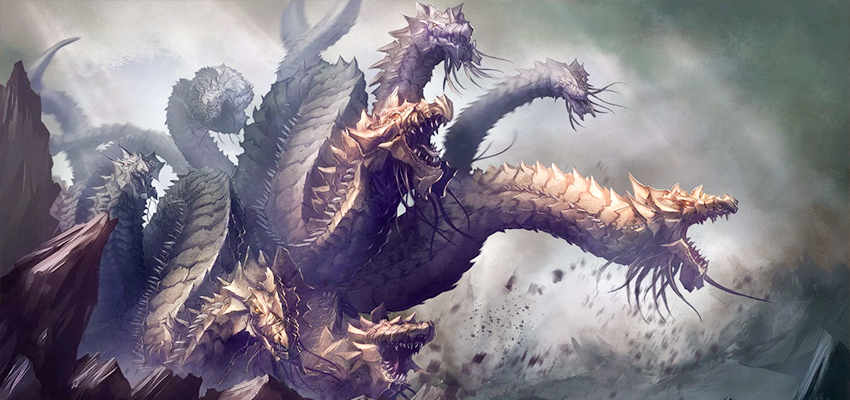
Greek mythology had the Lernaean Hydra—a wildly diverse and prolific creature, it was a mix of snakes, scorpions, and serpents. It was said to have had many heads and every time one would be cut off, two more would grow from the wound. The Hydra lived in Lerna Lake in Argolid, Greece.
The Greek demigod Heracles was charged with the second labor of slaying the Lernaean Hydra by Eurystheus, king of Tiryns, in order to redeem himself for accidentally killing his wife and children. As Heracles reached the poisonous lake Lerna, he was forced to cover his nose and mouth with a cloth in order to protect himself. After Heracles cut one of the monster’s heads off, he was startled to find that two more popped up.
As soon as Heracles cut off the two heads, his nephew Iolaus had an idea; to use fire to cauterize the stump of the neck. Sure enough, their plan worked and they started winning their battles quickly.
Hera, the goddess of vengeance who raises monsters to kill Heracles, gave the Hydra a giant crab. After destroying the crab body, Heracles was still able to kill the immortal head by using a golden sword that the goddess Athena had offered him.
7 Charybdis
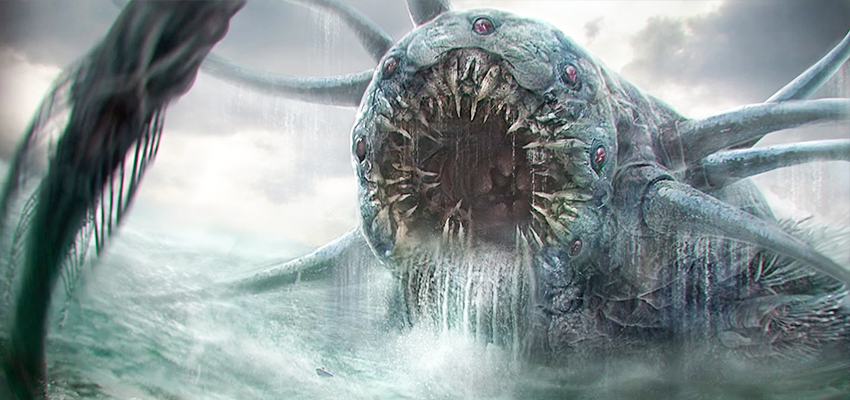
A mythical water dragon or monster that lived in the Strait of Messina was rationalized as a whirlpool. In Greek mythology, it was thought that Charybdis lived on one side of the strait, while Scylla (another Greek sea monster) lived on the other; this caused a dangerous situation for sailors who tried to avoid one monster would inevitably get sucked into the other’s lair. Charybdis was the daughter of Poseidon and Gaea, and played a key role in the great mythological war between Poseidon and Zeus. Zeus became angry with the actions of Charybdis, and transformed her into a monster who would always consume sea water, creating whirlpools.
8 Scylla

Scylla was a famous sea monster in Greek mythology. She lived on the shores of the Strait of Messina, guarding the entrance to the strait with her eight dangerous heads and eight long serpentine tails. Any sailors unlucky enough to provoke her would quickly understand why; Scylla could easily swallow them whole, leaving them terrorized inside her stomach until they were digested and assimilated into her body. Scylla may have originally been a sea goddess or personification of dangerous waves. She often appeared in poems and stories written about journeying through the Mediterranean Sea.
9 Makar

Makar is the name given to a giant sea serpent in Indian (Hindu) mythology. He is usually portrayed as being very strong and ferocious, but also possessing a sense of compassion.nnAccording to Hindu mythology, makar is a powerful beast that dwells in the depths of the ocean.
Makar is also known for his kindness and compassion. If a sailor happens to find himself in danger while sailing on the ocean, makar is said to protect him by swimming after the ship and dragging it to safety.
10 Shesha Naag

A naga, also known as a nagaswaram or nāgasurām, is a serpentine water dragon often depicted in Hindu mythology and featured in various Indian temple art and iconography. In Indian tradition, they are considered messengers of the divine. Along with the Garuda, they are among the best known symbols of Vishnu.
Shesha is the king of all serpents and he governs the world. He is said to be a diligent servant of Lord Vishnu, worshiping and singing of his glory. He is usually depicted floating in the ocean with five to seven heads, each of which sports a crown. He was incarnated as the brother of Lord Rama and Lord Krishna, respectively in Hindu mythology. He offered his devotion to Lord Vishnu in each of his incarnations, with complete dedication. He served as a servant of Lord Vishnu, noted for his devotion and purity. He is portrayed as floating in the ocean upon which Lord Vishnu lays calmly next to the consort, Goddess Laxmi.




